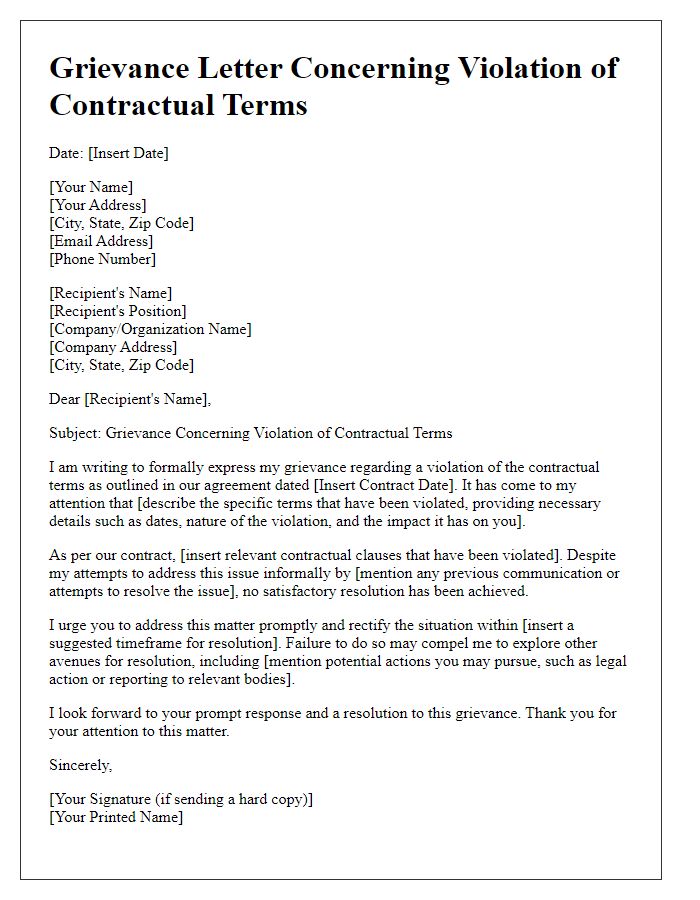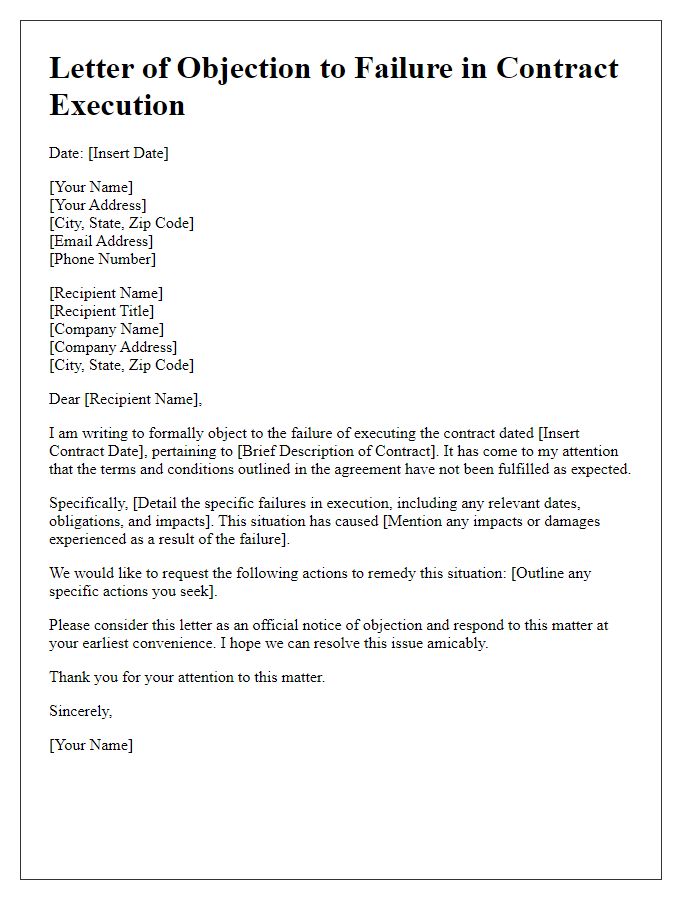In today's fast-paced world, navigating contracts can sometimes lead to misunderstandings or, worse, breaches. When an agreement is compromised, it's essential to address the issue promptly and formally to protect your rights. A well-structured complaint letter can serve as an effective tool in resolving disputes amicably. Join me as we explore key elements to include in your complaint letter and how to craft a clear, impactful message!

Contact Information (Sender and Recipient)
A formal complaint regarding a breach of contract should include detailed contact information for both the sender and the recipient. The sender's information typically comprises their full name, postal address, email address, and phone number, which allows for direct communication. The recipient's details include the name of the individual or organization, their official address, and any pertinent department (like customer service or legal). Clear identification of both parties enhances the clarity and professionalism of the complaint, ensuring it is directed to the appropriate recipient for resolution.
Subject Line and Date
Formal complaint letters address breaches of contract, often requiring specific details. In the subject line, include "Formal Complaint Regarding Breach of Contract" to clearly identify the purpose. The date should reflect the current day in the standard format (Month Day, Year), establishing a precise timeline for the complaint. Maintaining clarity and professionalism is essential throughout the communication.
Detailed Description of Breach
A breach of contract occurs when one party fails to fulfill the terms outlined in a legally binding agreement, leading to potential legal disputes. For instance, if a construction company, XYZ Builders, fails to complete a residential project by the specified date of March 1, 2023, as per contract number 78945, the homeowner, Jane Smith, could claim this as a breach. Additionally, if the materials used by XYZ Builders do not meet the quality standards stipulated in the contract, such as using inferior-grade cement instead of the specified premium-grade, this further exacerbates the breach. Jane Smith may also report that the project experienced multiple delays, affecting her finances and causing inconvenience, as outlined in the payment schedule detailing the due dates and amounts. Documentation supporting these claims, such as photos of the construction site, emails confirming delays, and the original signed contract, can strengthen the case, potentially leading to resolutions or legal remedies.
Contractual References and Provisions
A formal complaint regarding a breach of contract often includes specific contractual references and provisions to substantiate the claim. The complaint should clearly mention the contract date (e.g., July 15, 2022), the parties involved (e.g., ABC Corporation and XYZ Enterprises), and specific clauses that have been violated (e.g., Clause 3 regarding delivery timelines). Documentation of instances that demonstrate the breach, such as missed deadlines or insufficient product quality, adds credibility. A resolution request, such as compensation or rectification, should also be articulated, ensuring reference to relevant laws governing the contract, possibly based on the Uniform Commercial Code for commercial transactions.
Requested Resolution and Timeframe
Formal complaints regarding breach of contract should always be clear and concise, ensuring specific details and expectations are included. In contractual matters, timelines are crucial for both the issue resolution and for setting deadlines for the expected response. A written request for resolution should outline the specific contractual obligations that have not been met and cite corresponding clauses. For instance, if a service agreement, dated March 15, 2022, specifies delivery of goods within 30 days, mention the expected delivery by April 14, 2022, and the actual date of non-compliance. Specify the required action for resolution, such as fulfilling the contract, a refund, or compensation for damages. Indicate a reasonable timeframe for response, typically 14 to 30 days, ensuring to mention a follow-up action should the resolution not be achieved. This structured approach helps ensure clarity and establishes a firm reference point for both parties involved in the dispute.
Letter Template For Formal Complaint About Breach Of Contract Samples
Letter template of formal complaint regarding breach of contract obligations.













Comments